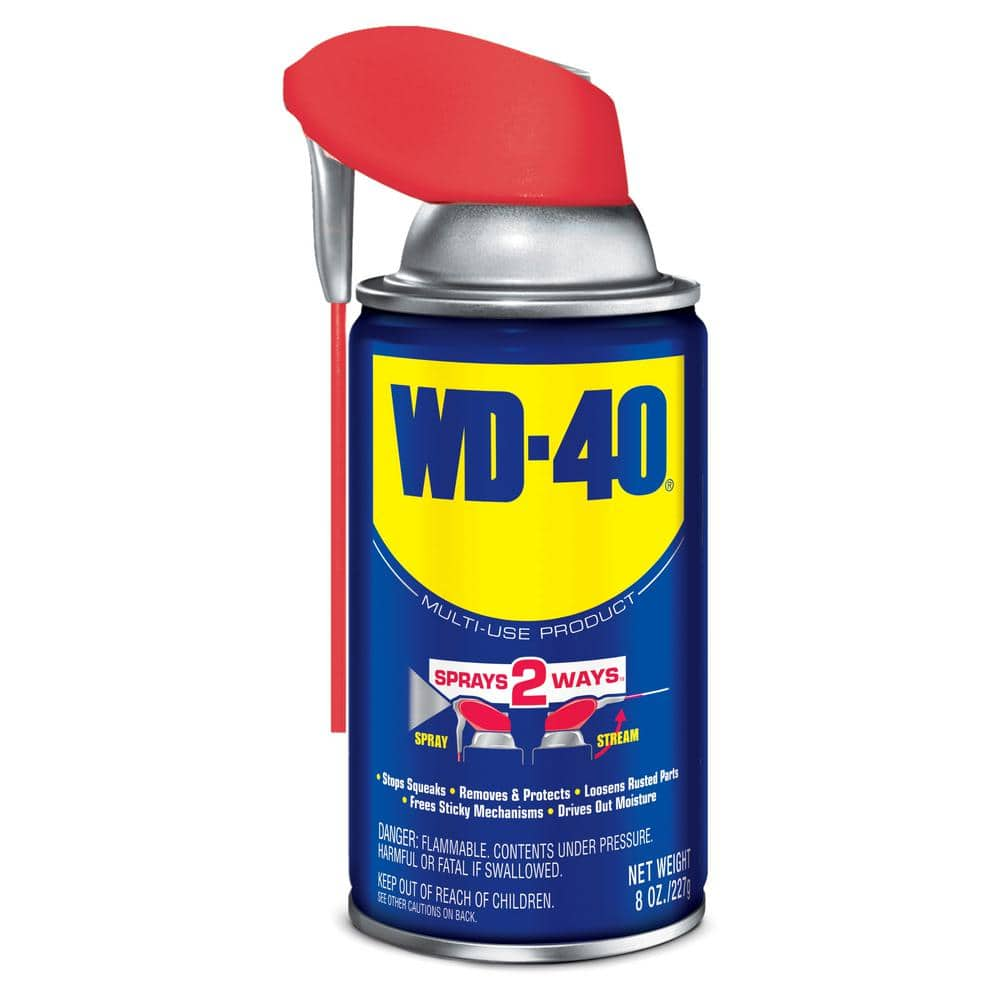WD-40 is a widely recognized and versatile product that has been a staple in many households for decades. But have you ever wondered what the “WD” in WD-40 actually stands for? The answer lies in its origins and purpose.
Back in 1953, a group of engineers at the Rocket Chemical Company in San Diego set out to create a water displacing solution that could protect the outer skin of the Atlas Missile from rust and corrosion. After numerous attempts, they finally perfected the formula on their 40th try, hence the name WD-40, which stands for “Water Displacement, number 40.”
The engineers at Rocket Chemical Company realized that their creation had potential beyond its original purpose and decided to market it to the public. In 1958, WD-40 made its debut on store shelves in San Diego, and it quickly gained popularity due to its effectiveness in various applications.
One of the key features of WD-40 is its ability to displace moisture. It can penetrate and loosen rusted parts, making it an excellent option for freeing up stuck mechanisms, such as nuts, bolts, and hinges. The product’s unique formula also provides a protective barrier against moisture, preventing further rust and corrosion from occurring.
But the uses of WD-40 go far beyond rust prevention. It is a versatile multi-use product that has found its way into countless applications in homes, workshops, and industries worldwide. WD-40 can be used to lubricate moving parts, eliminate squeaks and creaks, and even remove sticky residues from surfaces.
In addition to its mechanical applications, WD-40 also has various household uses. It can be used to remove stubborn stains, such as crayon marks or adhesive residue, from surfaces. It can also help prevent snow and ice from sticking to shovels, snow blowers, and other winter tools.
Furthermore, WD-40 has proven to be a handy tool for many DIY enthusiasts. It can aid in the removal of chewing gum from hair or clothing, act as a temporary lubricant for door locks, and even help remove rust from metal surfaces.
It’s important to note that while WD-40 is a versatile product, it may not be suitable for all purposes. It is always recommended to read and follow the instructions on the label and test the product on a small, inconspicuous area before using it on a larger scale.
WD-40, which stands for “Water Displacement, number 40,” is a highly effective and versatile product that has been trusted by consumers for its ability to protect against rust and corrosion, as well as its wide range of applications. Whether you need to free up a stuck mechanism, remove stubborn stains, or lubricate moving parts, WD-40 is a go-to solution that has stood the test of time.
What Was WD-40 Originally Created For?
WD-40 Multi-Use Product was originally created to serve as a protective agent against rust and corrosion. It made its debut in 1958 when it was utilized by Convair, an aerospace contractor, to safeguard the outer skin of the Atlas Missile. The primary purpose of WD-40 was to prevent the detrimental effects of rust and corrosion on the missile’s surface, which could compromise its structural integrity and performance. This innovative product was specifically designed to provide a reliable and effective solution to combat rust and corrosion, ensuring the longevity and functionality of the Atlas Missile.

Who Owns WD-40?
WD-40, the well-known water displacer, is owned by the WD-40 Company. The company is headquartered in San Diego, California, United States. It was on September 23, 1953, that WD-40 was first introduced to the market. The WD-40 Company has been the sole owner of this product since its inception.
Where Did WD-40 Come From?
WD-40 originated from a company called Rocket Chemical Company, based in San Diego. This product was developed by three engineers who were working at the aerospace outfit. It is interesting to note that the name WD-40 actually signifies its origin and purpose. The “WD” stands for “Water Displacement,” and the number “40” represents the number of attempts it took to perfect the formula.
WD-40 was not an instant success, as it underwent a series of trials and errors before achieving the desired effectiveness. The engineers at Rocket Chemical Company persevered through 39 failed attempts before finally creating the winning formula. Hence, the name WD-40 was chosen to commemorate their 40th and successful attempt.
The primary purpose of WD-40 is to displace water, making it an ideal product for various applications. Its formula provides a protective barrier against moisture, corrosion, and rust. WD-40’s versatility has made it a popular household item, being used for lubrication, cleaning, and as a general-purpose maintenance tool.
WD-40 was born out of the efforts of three engineers at Rocket Chemical Company in San Diego. Its name, WD-40, represents the product’s ability to displace water and the number of attempts it took to perfect the formula. Today, WD-40 is widely recognized and utilized for its versatile applications in lubrication, cleaning, and maintenance.
Conclusion
WD-40 stands for “Water Displacement, number 40.” This iconic product was initially developed by three engineers at the Rocket Chemical Company in San Diego, California. It took them 40 attempts to perfect the formula, hence the name WD-40. Since its introduction in 1953, WD-40 has become widely recognized for its ability to protect against rust and corrosion. Originally used to safeguard the outer skin of the Atlas Missile, it has since evolved into a versatile multi-use product that can be found on store shelves worldwide. With its long-standing reputation and countless applications, WD-40 continues to be a trusted solution for various maintenance and repair needs.
